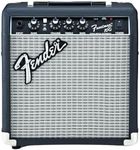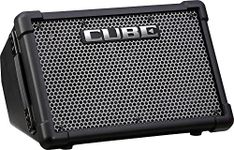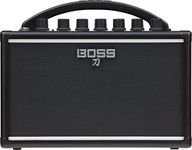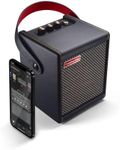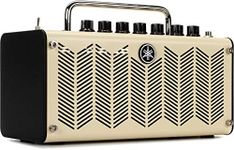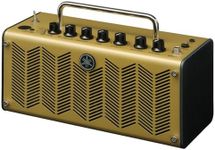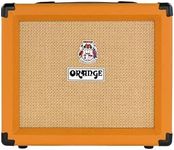Buying Guide for the Best Mini Guitar Amps
Choosing a mini guitar amp can be a fun process, especially if you want something portable, easy to use, and suitable for practice or small performances. The key is to think about where and how you’ll use the amp most often. Mini amps are great for home practice, travel, or even busking, but they come with different features and strengths. Understanding the main specifications will help you find an amp that matches your playing style and needs.WattageWattage refers to the power output of the amp, which affects how loud it can get. For mini guitar amps, wattage usually ranges from 1 to 10 watts. Lower wattage (1-3 watts) is perfect for quiet practice at home or in a bedroom, while higher wattage (5-10 watts) can give you a bit more volume for jamming with friends or playing in small spaces. If you mostly play alone or in quiet environments, a lower wattage amp will be enough. If you want a bit more presence or plan to play with others, consider something on the higher end of the mini amp range.
PortabilityPortability is about how easy it is to carry the amp around. Mini amps are designed to be lightweight and compact, but some are even small enough to fit in a backpack or clip onto a belt. If you plan to travel with your amp or use it in different locations, look for one that is especially compact and light. If it will mostly stay in one place, size may be less important. Think about your lifestyle and how often you’ll need to move the amp.
Power SourceMini amps can be powered by batteries, an AC adapter, or sometimes both. Battery-powered amps are great for playing outdoors or on the go, while AC-powered amps are better if you’ll always be near a power outlet. Some amps offer both options, giving you flexibility. If you want to play anywhere, look for battery operation. If you’ll always be indoors, AC power is fine.
Input and Output OptionsThis refers to the types of connections the amp offers, such as instrument input, headphone output, and auxiliary input for playing along with music. A headphone output is useful for silent practice, while an aux input lets you connect your phone or music player. If you want to practice quietly or jam along with tracks, make sure the amp has these features. If you just need a basic amp for your guitar, a simple input may be enough.
Built-in EffectsSome mini amps come with built-in effects like overdrive, reverb, or delay. These effects can add variety to your sound without needing extra pedals. If you like experimenting with different tones or want more versatility, look for an amp with built-in effects. If you prefer a straightforward sound or already have pedals, effects may not be as important.
Speaker SizeSpeaker size in mini amps is usually between 2 to 6 inches. Smaller speakers (2-3 inches) keep the amp compact and are fine for personal practice, while larger speakers (4-6 inches) can provide a fuller sound and a bit more volume. If you want the smallest possible amp, go for a smaller speaker. If sound quality and fullness are more important, consider a slightly larger speaker.
Tone ControlsTone controls let you adjust the bass, mid, and treble frequencies of your sound. Some mini amps have simple controls (just volume and tone), while others offer more detailed EQ options. If you like to shape your sound, look for an amp with more tone control. If you prefer simplicity, basic controls will do the job.

